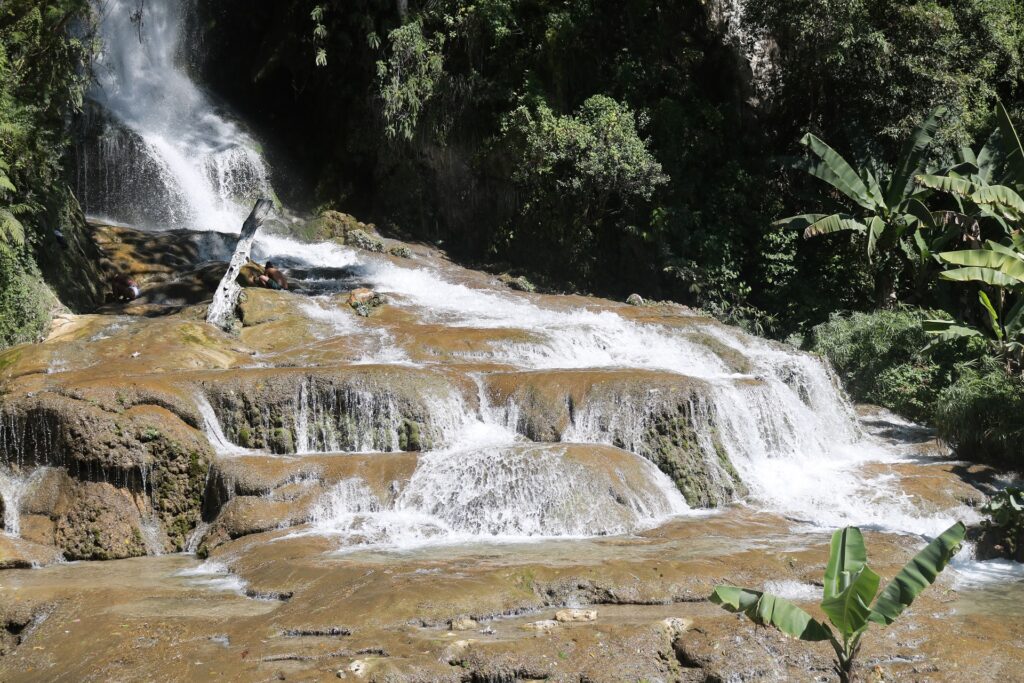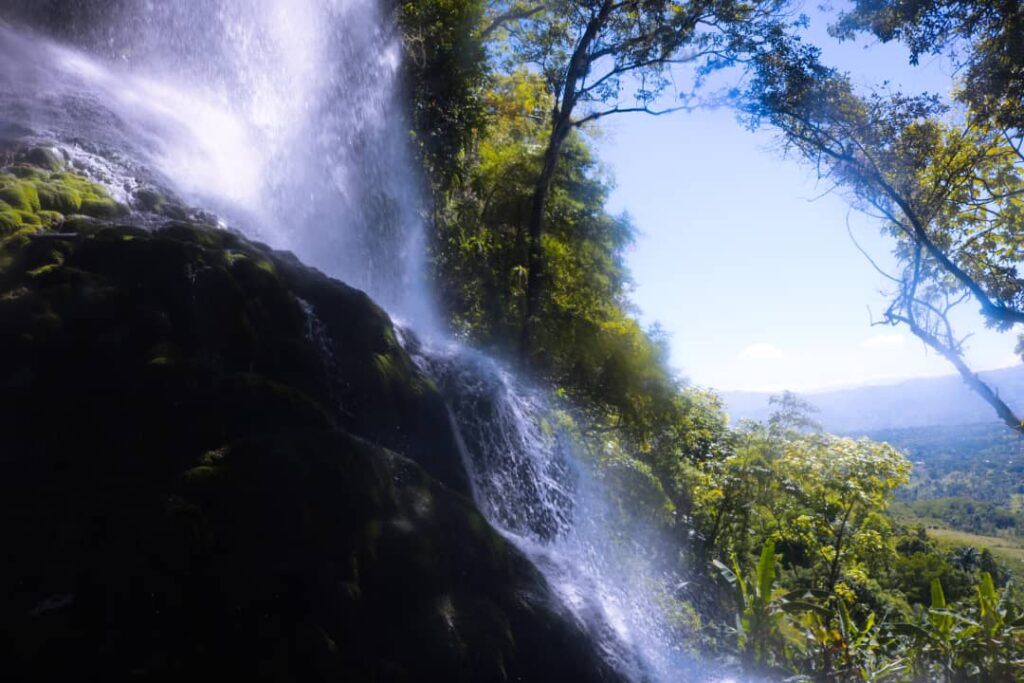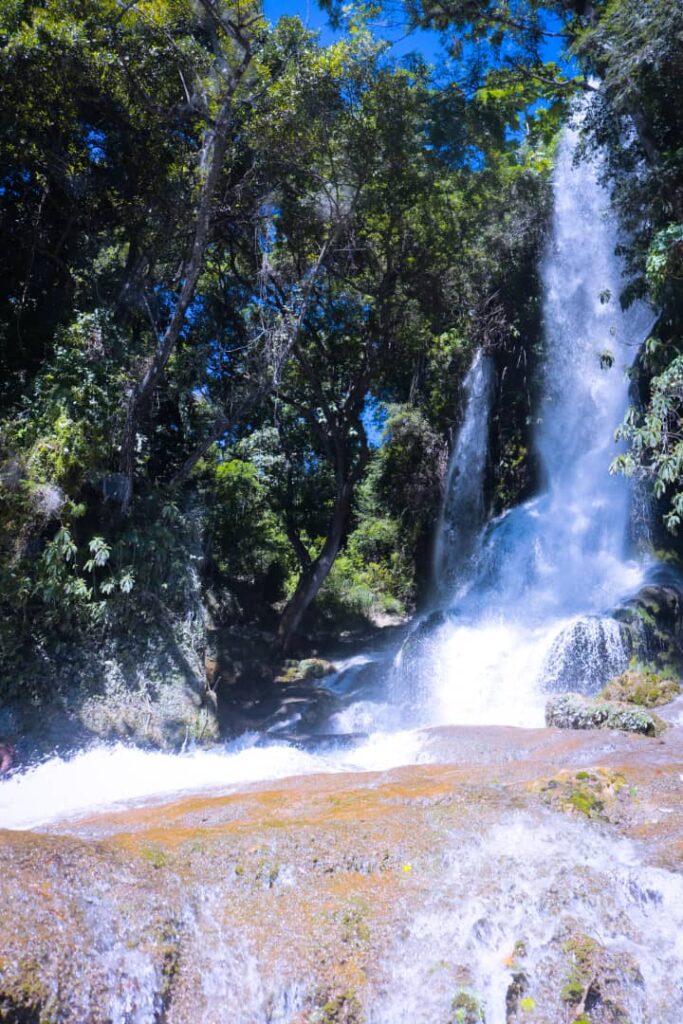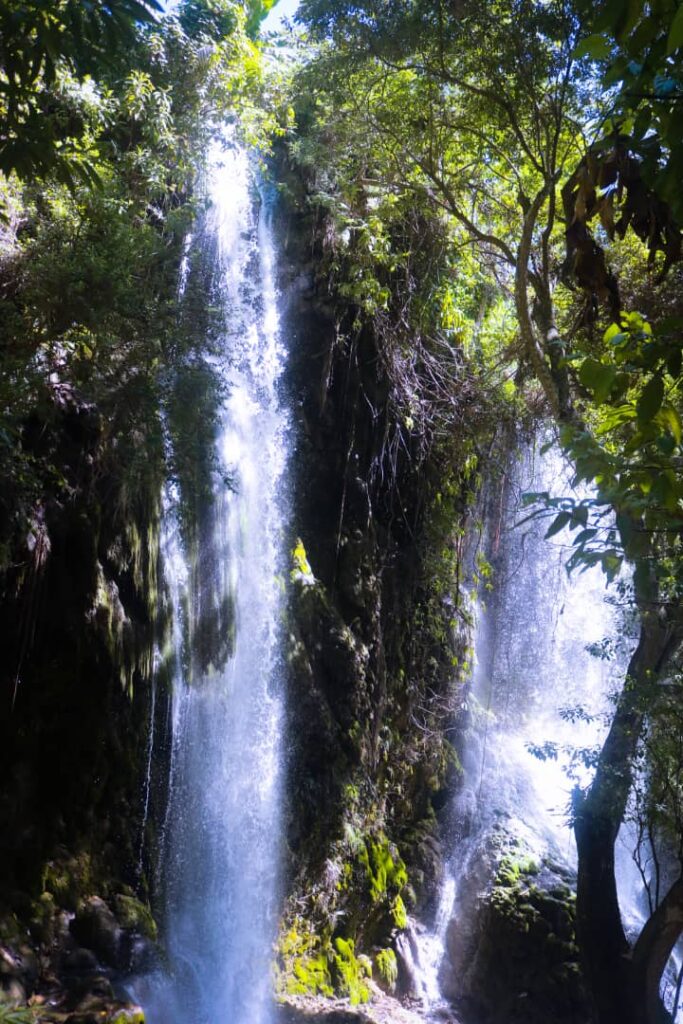
Saut-d'Eau's waterfall
Description
Supplied with water by the Terrible Mountain (Montagne Terrible) in the Center department, the Saut-d’Eau Waterfall is one of the most attractive natural sites in Haiti. According to legend, the waterfall would be known as a sacred site. In 1948, a man in his sixties named Fortuné lost his horse in a small forest of palm trees and wild flowers at the entrance to the city. He would have seen the image of a woman, the Virgin of the Miracle, crowned with stars with a child in her arms. Since then, the Saut-d’Eau Waterfall is known as a high religious pilgrimage site in Haiti and has become the strong symbol of Haitian religious syncretism.
Biodiversity
Declared a National Park in April 2017 and with an area of 648 hectares, the Saut-d’Eau Waterfall is endowed with a unique biodiversity with gigantic waterfalls, age-old trees, and generally lush, diversified and sacred vegetation. This wonder of nature gives the appearance of a paradise lost in the secret of the trees.
Ecotourism potential
The Saut-d’Eau Waterfall, in relation to its geographical position, has enormous ecotourism potential. Accessible for swimming all year round, it is located in a department bordering on the Occidente department, so it offers a possibility of access to tourists visiting the Occidente department. With its equally beneficial “healing” waters, this natural heritage has something to be proud of. Furthermore, for all those who practice voodoo, this waterfall is an essential destination, a place of pilgrimage where believers go every year to address the spirits that inhabit this space, particularly Erzulie, the goddess of love in the voodoo pantheon. It should be noted that the patronal festival of this sacred paradise is celebrated from July 8 to 16 of each year and attracts more than 200,000 visitors and pilgrims who come in search of purification of body and soul in its fresh waters.




